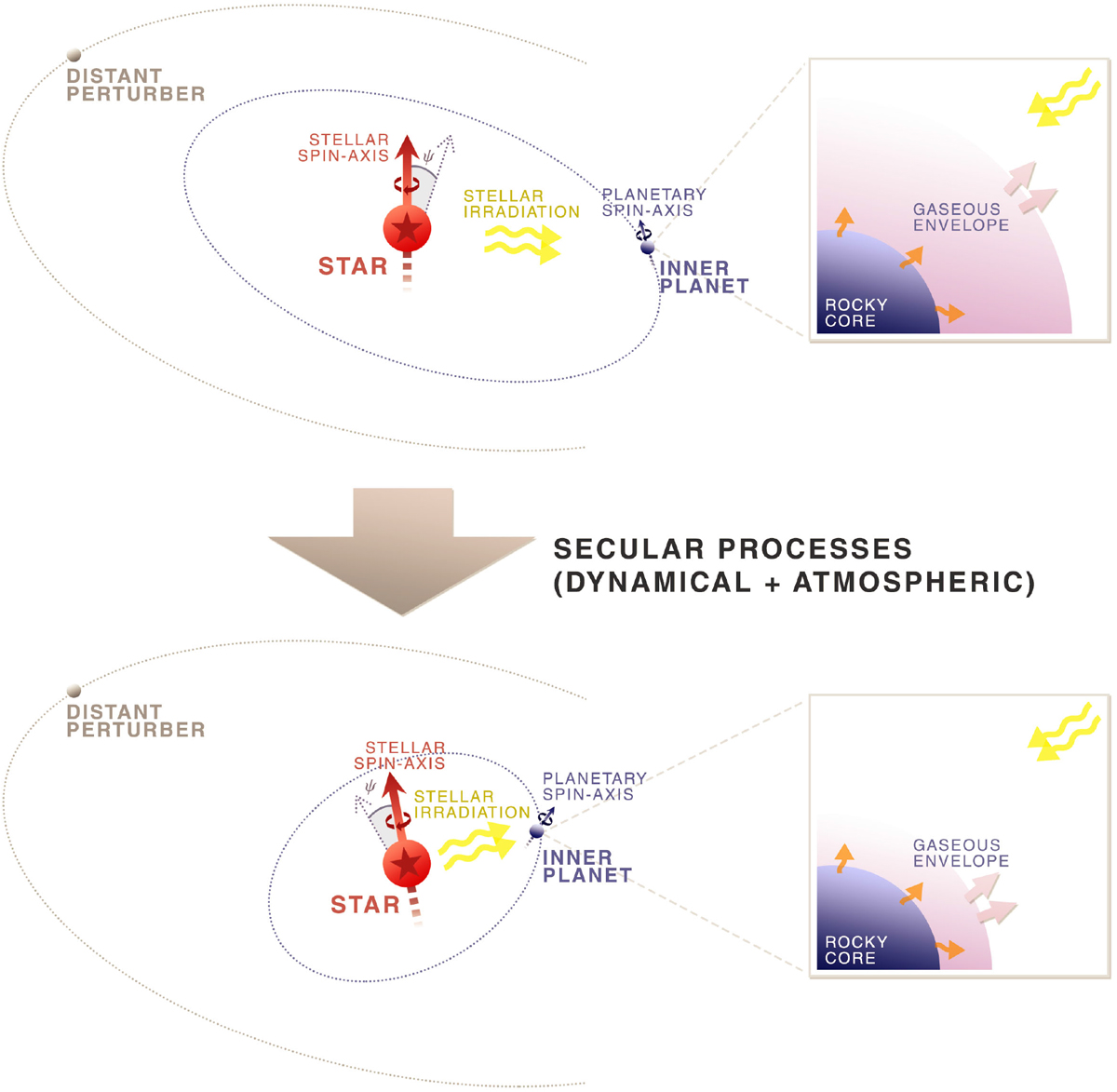Fig. 1

Download original image
Illustration of how the JADE code works. The central star and its spin-axis are in red. The stellar irradiation is represented in yellow. The inner planet orbiting the star is in blue, as well as its spin-axis. Its orbit is represented in dotted blue lines. The dotted blue arrow is the normal to the inner orbital plane. The spin-orbit angle ψ is highlighted in light blue. The distant perturber orbiting the star is represented in gray, as well as its orbit in dotted lines. A zoom on the atmospheric structure of the inner planet is depicted in the right part of the figure. It is composed of a gaseous envelope atop a rocky core. The orange arrows represent the radiogenic heating from the core and the light-purple ones account for atmospheric evaporation. From top to bottom, the figure depicts the configuration of the system at two different secular time steps. Due to secular dynamical processes, the shape of the inner orbit, as well as the stellar and planetary spin-axes, vary over time. The figure illustrates a typical case where the inner orbit shrank, circularized,and changed inclination. Mass loss of the inner planet’s gaseous envelope under the influence of stellar irradiation can lead to substantial changes in the planet’s mass and atmospheric structure. On the other hand, the outer orbit is considered immutable in the present framework.
Current usage metrics show cumulative count of Article Views (full-text article views including HTML views, PDF and ePub downloads, according to the available data) and Abstracts Views on Vision4Press platform.
Data correspond to usage on the plateform after 2015. The current usage metrics is available 48-96 hours after online publication and is updated daily on week days.
Initial download of the metrics may take a while.


